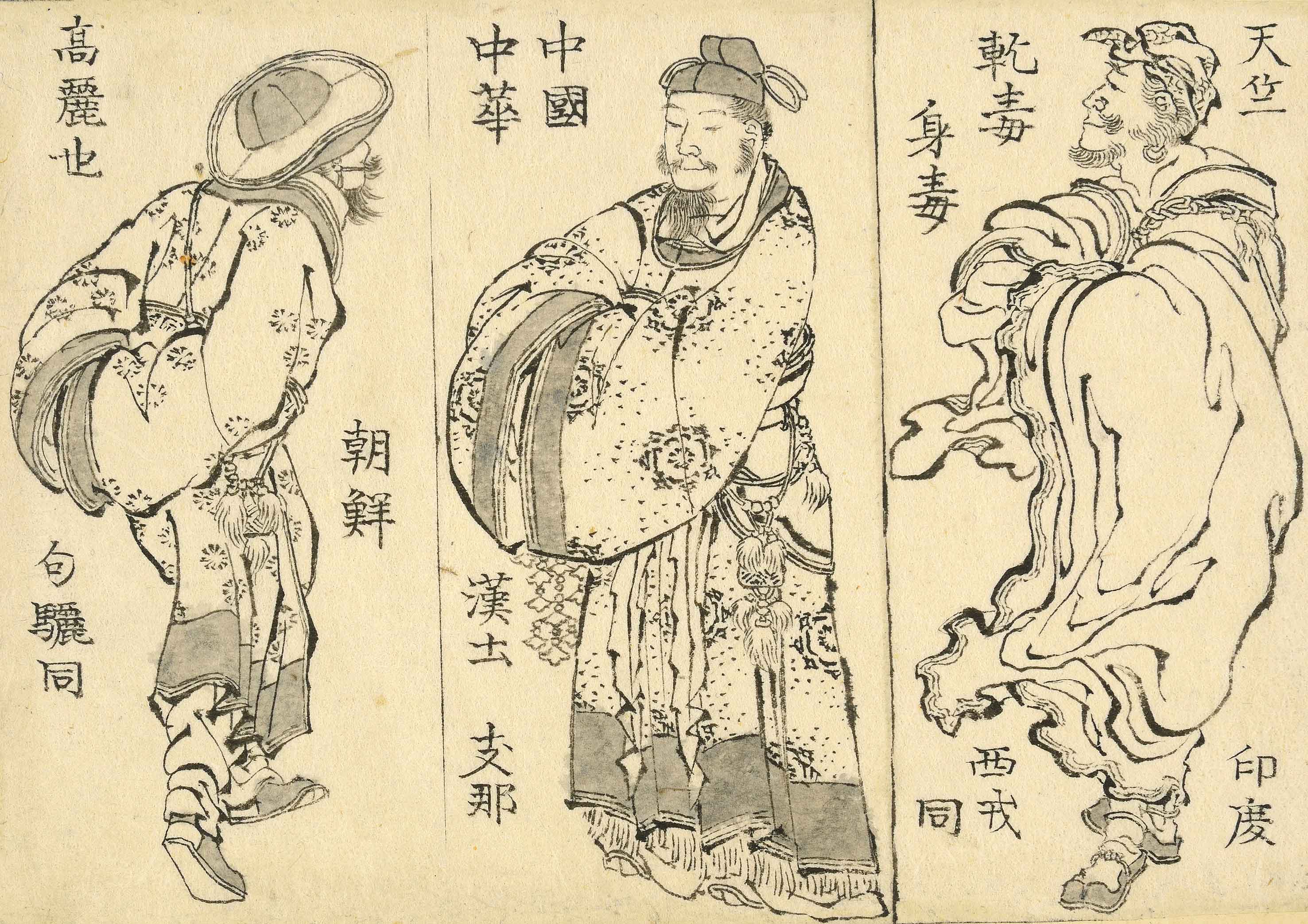The group of 103 rare brush-drawings for the Great Picture Book of Everything by Japanese artist Katsushika Hokusai (1760-1849), recently purchased by the British Museum, are currently on display until January 2022. The drawings, which are mounted on card, also came in their original small, wooden, box (11 x 15 cm). The drawings, depicting scenes from ancient China, Buddhist India and the natural world, were produced in the 1820s/40s for an illustrated encyclopaedia called The Great Picture Book of Everything (Banmotsu ehon daizen zu).
However, for reasons unknown, the book was never published, which saved these exceptional works from being destroyed as part of the woodblock printing process – they would have been used by the block-cutter to form the patterns on the blocks.
Each Drawing is the Size of a Picture Postcard
These lively drawings, each the size of a picture postcard, are a rare survival. They are neat, line-perfect, so-called ‘block-ready’ drawings (hanshita-e). If the book they were intended for had been published, a professional block-cutter would have pasted each one face down onto a plank of cherry wood and cut through the back of the paper with chisels and knives to create a finely detailed printing block.
This process would have destroyed the drawings. Instead, once they were no longer required for the abandoned publishing project, they were carefully mounted on cards and kept in a purpose-made storage box. In that way, they were converted from working drawings into a set of works of art for individual contemplation.
The drawings are a major discovery and contribute to Hokusai’s oeuvre. They are especially significant as they come from a period in the artist’s career where he was previously thought to have created relatively little, due to a succession of personal challenges. Within the previous two years he had suffered the death of his second wife and recovered from a minor stroke. And just months after these pieces were finished, Hokusai pleaded destitution in a letter – in part due to gambling debts incurred by his good-for-nothing grandson. The reason why these drawings were never published remains unclear, but they mark a turning point in the seventy-year-old artist’s career, demonstrating that he was in fact entering a new burst of creativity that would soon give birth to his famous print series, Thirty-Six Views of Mt Fuji (circa 1831-1833).
The Old Man Mad About Drawing
It was also the time when Hokusai created the illustrated book Hundred Views of Mount Fuji (Fugaku hyakkei), 3 vols, in 1834, 1835, and circa 1842. Printed in line and shades of grey, it not only presents a tribute to Mount Fuji, but it also contains the artist’s last treatments of the themes that had occupied his earlier career as well as numerous and surprising examples of pictorial puns. ‘From the age of six I was in the habit of drawing all kinds of things. Although I had produced numerous designs by my fiftieth year, none of my works done before my seventieth is really worth counting. At the age of seventy-three I have come to understand the true form of animals, insects, and fish, and the nature of plants and trees. Consequently, by the age of eighty I will have made more and more progress, and at ninety I will have got closer to the essence of art. At the age of one hundred I will have reached a magnificent level and at one hundred and ten each dot and each line will be alive. I would like to ask those who outlive me to observe that I have not spoken without reason’ – from The Old Man Mad About Drawing.
At the time Hokusai conceived The Great Picture Book of Everything, Japan was under strict Tokugawa rule, but it was a time of relative peace and prosperity. From 1639 to 1859, the government of the Tokugawa shoguns forbade people to travel abroad – and the reverse – foreigners were not allowed into Japan. However, there was still limited contact with foreigners through the southern port of Nagasaki. Commercial trade also connected China to Japan. Despite these restrictions and never leaving Japan himself, Hokusai allowed his imagination to roam over continents, dynasties, and religions.
Wide-Ranging Subject Matter in The Great Picture Book of Everything
In the drawings for The Great Picture Book of Everything, the artist’s animated figures portray wide-ranging subject-matter, including the origins of Buddhism in India, agriculture, weights and measures and even rice-wine brewing in ancient China – each drawing has a description in kanji. Other subjects include religious, mythological, historical and literary figures, as well as a bestiary of animals, birds and flowers and other natural phenomena and landscapes. Many subjects are not found in any previous works of the artist, including the imaginings of the origins of human culture in ancient China.
The existence of these small drawings – 103 in total – had been forgotten for over 70 years. Formerly owned by the collector and jeweller Henri Vever (1854-1942), they resurfaced in Paris in 2019 at auction, in the same city where they were last publicly recorded, also at an auction in 1948. The drawings are thought to have been in a private collection in France in the intervening years and unknown to the wider world. It is also a mystery how the drawings first entered the Vever Collection.
The British Museum has one of the most comprehensive collections of Hokusai works outside of Japan. Visitors to the exhibition will also have a chance to see two Edo-period (1615-1868) examples of Hokusai’s most celebrated print Under the Wave off Kanagawa (1831).
Until 30 January 2022, The Great Picture Book of Everything by Hokusai, at the British Museum, London, britishmuseum.org.uk. A book on the subject by Timothy Clark accompanies the exhibition. All 103 images can be found on the museum’s website.








